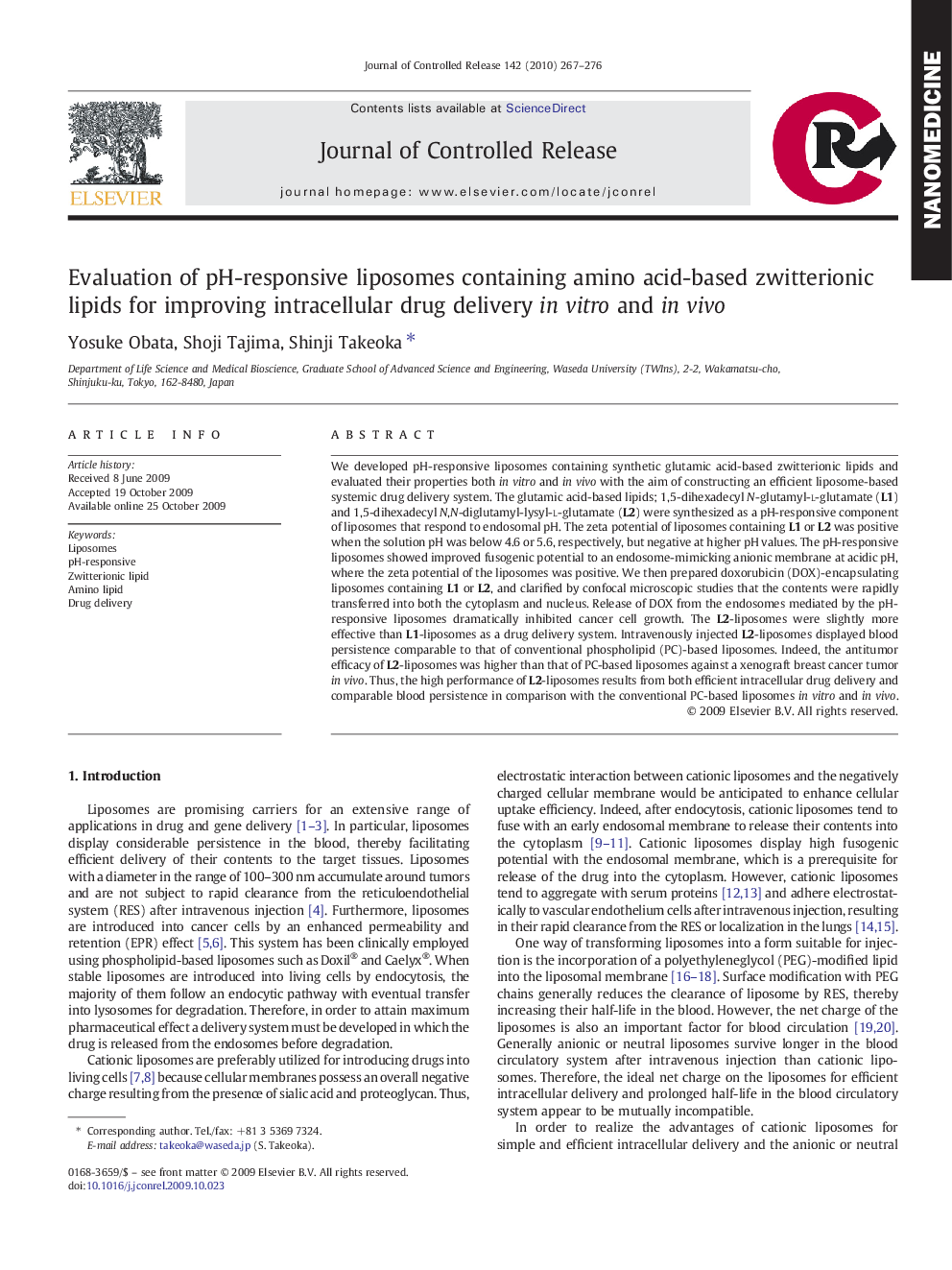| Article ID | Journal | Published Year | Pages | File Type |
|---|---|---|---|---|
| 1425999 | Journal of Controlled Release | 2010 | 10 Pages |
We developed pH-responsive liposomes containing synthetic glutamic acid-based zwitterionic lipids and evaluated their properties both in vitro and in vivo with the aim of constructing an efficient liposome-based systemic drug delivery system. The glutamic acid-based lipids; 1,5-dihexadecyl N-glutamyl-l-glutamate (L1) and 1,5-dihexadecyl N,N-diglutamyl-lysyl-l-glutamate (L2) were synthesized as a pH-responsive component of liposomes that respond to endosomal pH. The zeta potential of liposomes containing L1 or L2 was positive when the solution pH was below 4.6 or 5.6, respectively, but negative at higher pH values. The pH-responsive liposomes showed improved fusogenic potential to an endosome-mimicking anionic membrane at acidic pH, where the zeta potential of the liposomes was positive. We then prepared doxorubicin (DOX)-encapsulating liposomes containing L1 or L2, and clarified by confocal microscopic studies that the contents were rapidly transferred into both the cytoplasm and nucleus. Release of DOX from the endosomes mediated by the pH-responsive liposomes dramatically inhibited cancer cell growth. The L2-liposomes were slightly more effective than L1-liposomes as a drug delivery system. Intravenously injected L2-liposomes displayed blood persistence comparable to that of conventional phospholipid (PC)-based liposomes. Indeed, the antitumor efficacy of L2-liposomes was higher than that of PC-based liposomes against a xenograft breast cancer tumor in vivo. Thus, the high performance of L2-liposomes results from both efficient intracellular drug delivery and comparable blood persistence in comparison with the conventional PC-based liposomes in vitro and in vivo.
Graphical abstractCharge conversion liposomes enable to improve both blood circulation and intracellular drug delivery.Figure optionsDownload full-size imageDownload as PowerPoint slide
